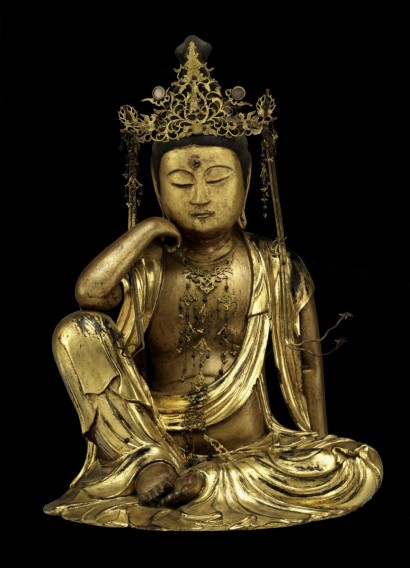Japan, Edo period, ca. 1693; wood with gold, gold leaf, lacquer, and crystal inlay; 16 9/16 x 12 1/8 x 10 1/4 in.; The Metropolitan Museum of Art, Rogers Fund 1956, 56.39, photo © The Metropolitan Museum of Art; source: Art Resource, NY.
Guanyin of the Southern Sea
China, Liao (907–1125) or Jin dynasty (1115–1234); wood with polychromy; 95 x 65 in.; The Nelson-Atkins Museum of Art, Kansas City, Missouri, Purchase, William Rockwell Nelson Trust, 34-10, photo: Jamison Miller.
Both the Japanese and the Chinese works seen here show the bodhisattva seated on a rocky pedestal that evokes Potalaka; both figures adopt the pose of royal ease, right arm poised on the raised knee. And both sculptures seem to woo the viewer with opulent decoration and rich surfaces. These presentations equate material splendor with spiritual attainment. Such awe-inspiring visions of Avalokiteshvara can be the “skillful means” to attract potential followers to the bodhisattva’s path.





